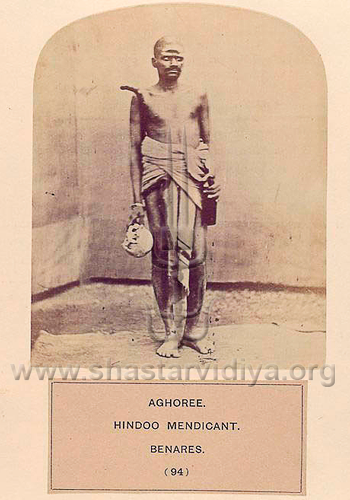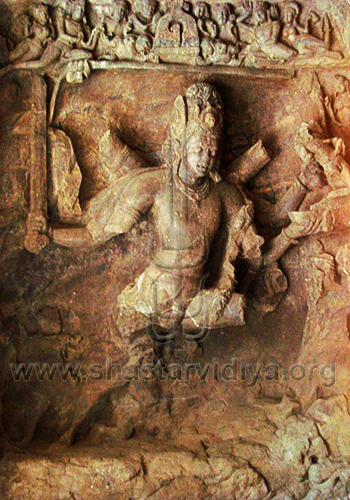"Danced the Kapalik, beating a rhythmic beat raising a fearful clamour"
(Sarbloh Guru Granth Sahib)
As the Aryans gained dominance across India, there emerged from amongst the primal Pashupati masters, dark esoteric 'Babas' (elders) known as the 'Kapalika' (also known as the 'Kapalik' / 'Kapalak' / 'Kapalish' Sadhus). They were devotees of "Kapali (skull carrying) Rudra" (Sarbloh Guru Granth Sahib, 1:2.126.).
Wandering the lands whilst carrying a skull of a sacrificed Brahmin (Aryan priest), they were hostile to the Aryans. They maintained a very dark element to their conduct and character, which they inherited from their pre-Vedic Pashupati ancestors; known to practice "violent rituals, sacrifices mixed with screams, laughter, and dances; that are very close to the Dionysian rites" (Alain Danielou with Jean-Louis Gabin, Shiva and the Primordial Tradition, (Inner Traditions Rochester, Vermont, 2007), 24).
Guru Gobind Singh, while describing a mythological battle wrote:
"Danced the Kapalik, beating a rhythmic beat raising a fearful clamour."
(Sarbloh Guru Granth Sahib, 1:2.87)
The Kapalikas were ferocious, naked, ash-smeared warrior-masters of psychological warfare. They were described as approaching their foes with "fierce and angry roars like a turbulent sea." (William R. Pinch, Warrior Ascetics And Indian Empires, (Cambridge University Press, 2006), 38-39).
"After battles they were known to have strung together the heads of their fallen foes."
(David N. Lorenzen, The Kaplikas And Kalamukhas Two Lost Saivite Sects, (University Of California Press, Berkeley and Los Angeles, 1972), 24)



